
Welcome to the 18th edition of First Nations News & Views. This weekly series is one element in the “Invisible Indians” project put together by Meteor Blades and me, with assistance from the Native American Netroots Group. Last week’s edition is here. In this edition you will find a new documentary on the Navajo, a look at the year 1876 in American Indian history, The Doctrine of Discovery, some news briefs and a few linkable bulleted briefs. Click on any of the headlines below to take you directly to that section of News & Views or to any of our earlier editions.
By navajo

The sun greeted the children of Dorey and Yolanda Nez with the kiss of death when they born. The couple live in a trailer on the New Mexico part of the Navajo reservation. Their two children were born with a rare and deadly genetic disorder called Xeroderma Pigmentosum (XP) that causes severe sunburn with blistering and vastly increased cancer risk upon exposure to any sunlight. While the incidence of the disorder is one in a million in the general population, the occurrence among Navajo is one in 30,000. Why?
Maya Stark and Adi Lavy have filmed a documentary about Dorey, Yolanda and their children called Sun Kissed. It premiered at the L.A. Film Festival on June 16.
Like so many living on remote reservations with limited financial resources, the Nez family had to learn about their plight and how to treat their children without professional help. Before much was known about the disorder, Indian Health Service authorities took some Navajo children away from their parents because they suspected negligence after seeing cases of severe sunburning.
The Nezes’ son had died at age 11 and, before the filming ended, their daughter had died at age 16. The incredible burden of keeping their children out of the sun as much as possible and enduring the aftermath of any exposure was understandably overwhelming. Sun Kissed shows Dorey and Yolanda suffering along with their daughter as they shower her with love.
The filmmakers explore the conflict between ancient Navajo taboos and modern applications of science. Navajo traditionally do not to talk about death, disease and hardship. They rely on ancient healing methods. The Nezes natural need to know why this was happening to them and how to cure their children clashed with the rigid cultural rules guarded by their own parents.
Harmony matters in Navajo culture. When events disrupt harmony, the need – the requirement – to restore balance overrides everything. The pressure to harmonize is intense. And when people cannot achieve that, when the disruption continues despite their most vigorous effort, they often blame themselves and are blamed by others for their failure. That was where Yolanda and Dorey found themselves.
Enter the filmmakers…and science. The film’s hook – One Gene Exposes a Nation’s Dark Past – suggests that the reduced population caused by the infamous “Long Walk,” the Navajo “Trail of Tears,” may be a factor in the affliction that struck the Nezes’ children.
Under orders from President Lincoln, in 1864, as part of the government’s campaign to eradicate or assimilate Indian populations in the West, the Army captured thousands of Navajo and, in 53 separate actions, force-marched them hundreds of miles from their homelands in Arizona and New Mexico to Fort Sumner or Bosque Redondo (in Navajo: Hwéeldi). About 9000 Navajo were imprisoned there for four years along with their enemies, 400 Mescalero Apache. As you can imagine, many died during their incarceration.
Many Navajo quietly left Bosque Redondo and the government gave up its first attempt at creating a Native reservation west of Indian Territory. The two sides signed a treaty in June 1868, allowing the Navajo to return home but requiring them to send their children to government-run schools-the policy of taking the Indian out of the Indian. This marked one of the few instances where the government relocated a tribe to within its traditional boundaries. Marched to Bosque Redondo in dozens of groups, the Navajo returned to their sacred ground as one large band stretching 10 miles along the trail home.
The filmmakers suggest that the reduced population from the Long Walk may have allowed the Xeroderma Pigmentosum gene to express itself more. While this is interesting speculation, it raises many questions. The group that survived seems too large to have created this anomaly. If only a very few people who started on the Long Walk had survived, it might be evidence supporting the idea that the forced-march contributed to the prevalence of the disorder. But, in addition to the Navajo who were removed at gunpoint, thousands of Navajo who hid and weren’t captured later mixed their genes with the returning population. My Navajo ancestors were among those who hid successfully from the army.
I consulted Kossack jotter, who has a doctorate in biochemistry, to help me understand the genetic speculation of the filmmakers. He responded with an email:
Having seen only the trailer for the documentary I can only speculate that they are invoking what is called “the founder effect,” in which a gene rare in a parent population becomes more frequent when a very few survivors, or “founders” give rise to a new population after a population bottleneck (which is a nice way of saying an event which very few survive).
Whether or not this is a true interpretation of the events around the Long Walk, I have no idea. If only a very few people who started on the Long Walk survived, it might give credence to the idea.
What I managed to read on line suggested that there were at least 9000 survivors of the Long Walk, but there may have been many fewer women who went on to have children.
This has been seen many times, in many populations, it is a consequence of a small population size. For example, Tay-Sachs is much more common in people of Ashkenazi (European Jewish) heritage than in other populations.
XP is actually a disease with many “causes,” at least 8 different genes can, when they are damaged, give rise to XP.
I couldn’t find anything about which type of XP is found in the Navajo, or if there is only one kind. If there is more than one kind, it would argue strongly against there being anything related to the Long Walk.
Without knowing what the incidence was before and after the Long Walk, it is kind of speculative to attribute the high incidence (relative to European populations) to that event.
I also wonder if the high incidence of XP isn’t of a more ancient origin. XP has a higher frequency in Japan. What about Taiwan, or Polynesia? There is genetic evidence for a closer association between peoples of the Southwest and South America to Southeast Asians.
Genetic questions aside, the beautifully shot film appears to take an engaged look at the Navajo culture. It documents the traditional taboos and stigma of having a disabled child, depicts the limited resources available on the reservation and recounts the multi-generational trauma of the tragic history of genocide by the government against the Navajo.
The film’s trailer can be seen here:http://www.youtube.com/embed/gz7Q4PQXZ74
with the first showing on Oct. 18, 2012.

By Meteor Blades
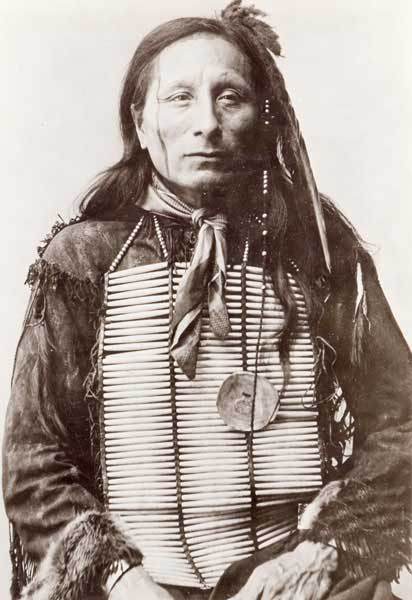
Lakota witness to “Custer’s Last Stand”
“The Custer Myth is a living thing, which refuses to die despite the efforts of careful historians to reduce it to uncontroverted facts. Almost everything about it is in some degree disputed.”
-The Custer Myth, by William A. Graham (1953)
On June 25, 1876, the Custer myth got its start as Sioux and Cheyenne warriors clashed with the U.S. Army’s Seventh Cavalry in Medicine Tail Coulee and the surrounding area on the Greasy Grass River (Little Big Horn) in Montana Territory. When the shooting was over, five companies of Lt. Col. George Armstrong Custer’s command had been wiped out, with 262 men dead and 55 wounded, half the battalion. So startling was the Indian victory that when Crow scouts who had been riding with Custer met up with Gen. Alfred Terry the day after the fight and told him what they had seen, he refused to believe them.
Since that June day 136 years ago, hundreds of books, most of them bad and some of them brimful of outright lies from beginning to end, and more than 50 movies, most of them dreadful, have kept that myth flourishing. A good deal of it was spun into being by Libby Bacon Custer, his widow, who wrote three books glorifying her husband and transforming him from a reckless, aggressively ambitious military politician into a heroic legend. This effort was assisted by two factors:
One was the classifying of the Official Record of the Court of Inquiry of 1879 until 1951. The inquiry was requested by Major Marcus Reno to clear his name for conduct he had been accused of during the battle. It was not until retired Col. William A. Graham wrote The Custer Myth: A Source Book of Custeriana (1953) that a book came close to telling the details of that bloody day on the Greasy Grass.
The second factor was President Theodore Roosevelt’s persuading of Edward Curtis in 1906 to leave an account of the Crow scouts he had interviewed out of his photo-rich, 20-volume The North American Indian. The scouts’ version was at odds with the image that Libby Custer had created over 30 years of books, lectures and interviews. Custer was Roosevelt’s hero, and the president informed Curtis that Americans would not take kindly to having their “memory” of the “Last Stand” besmirched by a trio of Indians, who, of course, were untrustworthy just by being Indian. Curtis dutifully left out that part of the story. Indeed, despite ample opportunity, the Indian side did not fully emerge into the view of the general public until the 1970s. That, in part, came about because the murderous policies that led to the battle and hundreds of others throughout American history began then to be examined outside of scholarly circles.
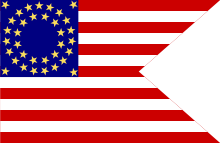
Graham’s 60-year-old book was the first popular work to dismember the myth, as historians and other writers have done in microscopic detail since. Yet, even today, in spite of the scholarly delving into the battle, archeological studies of the ground where the fight took place and the amateur and professional exploration of every scrap of minutiae, every bullet casing, every written or recorded word, elements of what happened at the Little Big Horn remain in dispute. Moreover, some Americans continue to revere Custer as a major hero. For instance, Congress voted in 1991 to rename Custer Battlefield National Monument the Little Big Horn Battlefield National Monument. In the year beforehand, the National Park Service received a steady flow of mail filled with racist slurs, bolstered by twisted patriotism and calling the name-change everything from a travesty to treason.
As Graham wrote in reply to his publisher’s pressure to ditch the word “myth” from the title:
Just what is a Myth? Ever since I began the study of history, many long years ago, I have been making the acquaintance of myths in one form or another. The exploits of the ancient gods of Greece and Rome come to one’s mind instantly when one speaks of myths; but each of them, very probably, was founded in greater or less degree upon the accomplishments of some man, whose identity, once known, was lost in the maze of traditions, fictions and inventions that ascribed to him the attributes of a superman; and as the centuries passed, endowed him with the character of a supernatural person.
We have ourselves created myths in the course of our own short history, which spans less than two hundred years. Washington was in fact a very human person, as contemporary records prove; but the Washington the average American knows is not the real Washington. As “Father of his Country”; the all-wise leader, the military hero, the champion of freedom and foe of tyranny, his human qualities have all but disappeared. He has become a Myth.
So also with Lincoln, martyred savior of his country; about whom and around whom has been built so fantastic a structure of fictitious tales and absurd stores, that the real Lincoln has been obscured from view; and so in our own day with Franklin D. Roosevelt, who to millions of Americans was a selfless, immaculate latter-day Messiah, who gave his life on the altar of self sacrifice. Both these men were human beings-very human; but the Lincoln and the Roosevelt known to the average American are Myths.
And so with Custer, and so with nearly everyone involved in the Custer story. It began in controversy and dispute; but because a devoted wife so skilfully and so forcefully painted her hero as a plumed knight in shining armor-a “chevalier sans peur and sans reproche,” that all who stood in the way of her appraisal were made to appear as cowards or scoundrels; and because her hero went out in a blaze of glory that became the setting for propaganda which caught and held, and still holds, the imagination of the American people, what began in controversy and dispute has ended in Myth; a myth built, like other myths, upon actual deeds and events, magnified, distorted and disproportioned by fiction, invention, imagination and speculation. The Custer known to the average Amercian is a Myth; and so is Reno; and so also in Benteen.
The Little Big Horn battle was neither the greatest nor most important fight in the Indian Wars that began in North America in 1540 when Francisco Vasquez de Coronado attacked the Tiwa in what is present-day New Mexico and ended in Bear Valley, Arizona, in 1918 in a clash between African American 10th Cavalry “Buffalo Soldiers” and a band of Yaqui. But the battle everyone can name has come down to us as the mythical “Custer’s Last Stand” and has in a multitude of ways shaped the American psyche regarding the collision between Europeans and Natives. Although the myth has been under attack for decades, both by scholars and Indians alike, it refuses to yield completely.
•••
SOURCES:
• The Custer Myth, W.A. Graham, 1953 and 1981.
• Son of the Morning Star: Custer and the Little Big Horn, Evan S. Connell, 1991.

The Doctrine of Discovery Still Plagues Native Peoples
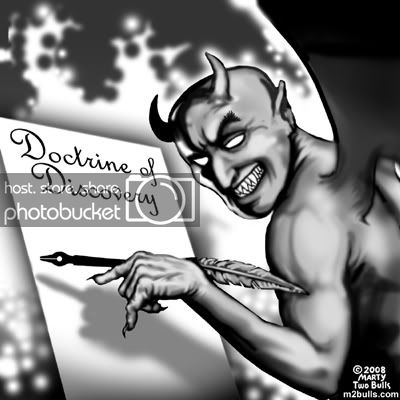
Law and its interpretation by the courts regarding American Indians in the United States are based on two concepts: (1) the U.S. Constitution, and (2) legal precedents from international law, primarily a legal fiction known as the Doctrine of Discovery.
In 1787, the United States adopted a Constitution as the supreme law of the land. Article I, Section 8, Clause 3 delegates to Congress the power “to regulate commerce with foreign nations, and among the several states, and with the Indian tribes.” Thus, dealings with the tribes were assigned to the federal government from the beginning. Most litigation regarding Indian matters derives from this clause. However, it has not been unusual for legal scholars, including one Supreme Court Chief Justice, and for many politicians and government leaders, to ignore it or otherwise get around it.
The “Doctrine of Discovery” is not well-known to Americans who are not historians, legal scholars or Natives. In brief, it is an ancient European legal concept which says that Christian nations have a right, if not an obligation, to rule over all non-Christian nations. Thus, the European nations, and the United States after 1787, felt that they had a legal right to govern American Indians. The Doctrine of Discovery accorded Christian nations the right to take land away from indigenous peoples, paying for it with the gift of religious conversion.
Pope Nicholas V in 1452 laid the foundation for the Doctrine of Discovery by issuing the papal bull dum diversas. This instructed the Portuguese monarchy “to invade, capture, vanquish, and subdue all Saracens, pagans, and other enemies of Christ, to put them into perpetual slavery, and to take away all their possessions and property.” The ideas found in this papal document were later woven into U.S. Indian law and, even today, is a shadow guiding U.S. Indian policy.
The original papal bull, technically still in force, was strengthened in 1455 with another, Romanus Pontifex. This sanctified the seizure of non-Christian lands and encouraged the slavery of native peoples wherever they were found.
Following the “discovery” of the Americas by Europeans, bulls by Pope Alexander VI in 1493 granted Spain and Portugal all the lands in the Americas which were not under Christian rule. His Inter Caetera Divina bull stated: “We trust in Him from whom empires, and governments, and all good things proceed.” Thus began the European assumption that the Native people of the hemisphere didn’t own the land they called their own because they were not Christian. The Pope decreed that: “barbarous nations be overthrown and brought to the faith itself.” In short, Christian-that is, Catholic-nations had the Pope’s written blessing to wage a “just war” against Indian nations that failed to recognize the Doctrine of Discovery.
Vine Deloria, Jr. (Yankton-Dakota) would write in the Afterword to Alvin Josephy, Jr.’s America in 1492: The World of Indian Peoples Before the Arrival of Columbus (1991): “Thus armed with a totally bogus title issued by God’s representative on earth, the Spaniards then began a brutal conquest in the Americas which virtually obliterated the native populations in the Caribbean within a generation.”
By 1513, Palacios Rubios, Spain’s master jurist, had refined the Doctrine of Discovery into a document that was to be read aloud, in Spanish or in Latin, when new peoples and/or lands were encountered. The fact that the indigenous people might not speak Spanish or Latin was not seen as relevant. The document recited the Christian history of the world and then demanded that the Natives accept this version of history and submit themselves to the authority of the Spanish king, who ruled by “Divine Right.”
The indigenous peoples were told that God has declared that the Pope rules all people, regardless of their law, sect or belief. This includes Christians, Moors, Jews, Gentiles, or any other sect. The Native Americans were to come forward of their own free will to convert to Catholicism or “with the help of God we shall use force against you, declaring war upon you from all sides and with all possible means, and we shall bind you to the yoke of the Church and Their Highnesses; we shall enslave your persons, wives, and sons, sell you or dispose of you as the King sees fit; we shall seize your possessions and harm you as much as we can as disobedient and resisting vassals.”
Furthermore, Natives who resist are to be held guilty of all resulting deaths and injuries from the “just” war waged against them.
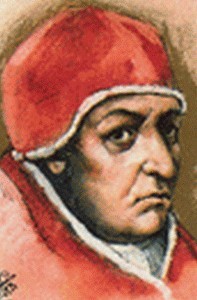
The Doctrine of Discovery entered into American jurisprudence in 1823 when the Supreme Court ruled on Johnson and Graham’s Lessee v. McIntosh. The Court found that the Doctrine of Discovery gave sovereignty of Indian lands to England and then to the United States. Indian nations, under this doctrine, have a right of occupancy to the land. Christian nations, such as England and the United States, have superior rights over the supposedly inferior culture and inferior religion of the Indians. According to the Court, Indians have been compensated for their lands by having the gift of Christianity bestowed upon them.
The Supreme Court’s use of the Doctrine of Discovery in Johnson and Graham’s Lessee v. McIntosh (1823) laid the foundation for Indian law that still continues, but without the brutal language of Palacio Rubios. The ruling reinforced the superiority of Christianity as a governing philosophy and paid little attention to either Indian history or Indian religions.
In 1954, the United States Supreme Court heard arguments in the case of Tee-Hit-Ton Indians v. United States. The government argued that under international law Christian nations can acquire lands occupied by heathens and infidels. It was an argument made by the United States government on the basis of the Christian religion. In their argument before the Court, government attorneys not only cited the 19th Century case of Johnson v. M’Intosh, but also the papal bulls of the 15th Century and the Old Testament of the Bible.
In 1955, the Supreme Court announced its decision denying the Tee-Hit-Ton (a band of the Tlingit Indians) any compensation for the taking of timber from their land. According to the Court: “The Christian nations of Europe acquired jurisdiction over newly discovered lands by virtue of grants from the Popes, who claimed the power to grant Christian monarchs the right to acquire territory in the possession of heathens and infidels.”
The Tee-Hit-Ton case reaffirmed the Doctrine of Discovery as the basis for U.S. law. It reaffirmed this Christian doctrine as the principle to be used in judging American Indians and discounted American Indian history and religious traditions. It denied that Indians had any legal rights as pagan nations.
In 2005, the Supreme Court once again cited the Discovery Doctrine in City of Sherrill v. Oneida Indian Nation of New York. Justice Ruth Bader Ginsburg wrote: “Under the ‘doctrine of discovery,’ fee title to the lands occupied by the Indians when the colonists arrived became vested in the sovereign-first the discovering European nation and later the original States and the United States.” The case ruled that tribal repurchase of land taken in the past does not restore Indian sovereignty over it.
In 2008, the International Council of Thirteen Indigenous Grandmothers traveled to the Vatican to ask Pope Benedict XVI to rescind the Discovery Doctrine that they said has encouraged the genocide of millions of indigenous people. Vatican police, however, claimed that the women were engaged in conducting anti-Catholic demonstrations.
In 2009, Onondaga Chief Oren Lyons asked Pope Benedict XVI to renounce the Doctrine of Discovery. The Pope declined, thus indicating that the doctrine continues as Church policy. However, that same year, the Episcopal Church adopted a resolution repudiating the doctrine. The resolution called on the United States to review its historical and contemporary policies that contribute to the continued colonization of Native peoples. The resolution also called for Queen Elizabeth II to repudiate publicly the validity of the Doctrine of Discovery.
In 2010, A Preliminary Study on the Doctrine of Discovery was presented to the United Nations Permanent Forum on Indigenous Issues by Tonya Gonnella Frichner (Onondaga). According to the study, the Doctrine of Discovery has been used to justify indigenous genocide and is one of the underlying reasons for the worldwide violations of the human rights of indigenous peoples. In 2012, the 11th Session of the United Nations Permanent Forum on Indigenous Issues discussed the Doctrine of Discovery.
On numerous other occasions, Indian leaders in the Americas have formally asked the Pope to renounce the Doctrine of Discovery. At the present time, it is still official policy of the Catholic Church and underlies part of American law.

NCAI President Seeks Voter Registration at Indian Health Services
By Meteor Blades
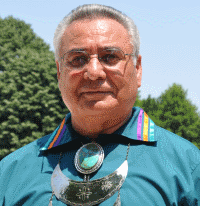
Jefferson Keel (Chickasaw), the president of the National Congress of American Indians, the largest group representing American Indians and Alaska Natives, is pushing voter registration for Indians in a way never seen before. He wants the largest-ever Native turnout this year at the polls. He told the Associated Press that the government should establish voter registration operations at Indian Health Service facilities under the provisions in accord with the National Voter Registration Act.
On reservations and in urban centers, the IHS provides members of federally recognized tribes health care and advocacy. It runs 142 hospitals, health centers and 50 health stations on reservations and about 30 urban Indian health projects where voter registration could be done, just as it is now done at public assistance agencies and local branches of the departments of motor vehicles in some states.
Only 40 percent of eligible Indians were registered to vote in 2008, meaning there are at least one million unregistered Indians. “This should be considered a civic emergency,” Keel told NCAI members assembled for a mid-year meeting in Lincoln, Nebraska, Tuesday. Many politicians believe the Indian vote is too small to care about. But boosting turnout can make a difference in the outcome of local, state and, very occasionally, congressional elections in several states where there are large concentrations of Indians.
For instance, in 2002, South Dakota Democrat Tim Johnson won reelection to his U.S. Senate seat against challenger John Thune by 532 votes, less than one-tenth of one percent of the vote. That victory can be credited to the huge margin he won on the Pine Ridge reservation by virtue of an unprecedented voter registration drive there that turned out large numbers of Oglala Lakota at the polls. The Democrats typically get more than 80 percent of the vote at Pine Ridge.
A new report from Demos found the Indian Health Service voting registration idea completely in line with public assistance agency registration. It also found that American Indians have the lowest voter participation rate of any ethnic group in the nation.
Demos found that when the law was implemented tens of thousands of new voters were added in North Carolina, Virginia, Missouri, Ohio and Illinois. “In Illinois, the number of public agency registration applications is now at levels 18 times the rate before re-implementation” of that voting registration law. That’s exactly the kind of boost that would be needed to register a million American Indian and Alaska Native voters. This process would also be cost-effective voter registration, the Congressional Budget Office estimates the total cost at less than $500,000 over a four-year period.
“The Native community in the United States is increasingly making its voice heard in state and national elections,” the Demos report said. “Unfortunately, most of our history has been one of state mistreatment and exclusion of indigenous peoples. There are still problems and tensions … Making voter registration easier and more accessible through designation of Indian Health Service facilities as voter registration agencies will not solve all the problems that are causing low rates of participation among American Indians and Alaska Natives or fully address the ongoing mistrust. Nonetheless, it would be an important step that would have a significant positive impact on the voting rights of thousands of Americans.”
Getting registered is, for Indians, just part of battle to get unfettered access at the polls. Since Indians gained citizenship in 1924, states and counties have tried all kinds of chicanery to keep them from exercising their rights. This ranges in recent years from denials based on tribal identity cards in Minnesota to at-large elections in Wyoming, from refusing to provide language assistance under the 1965 Voting Rights Act in New Mexico to discriminating against reservation-dwelling Indians by having fewer polling places per capita and fewer hours allowed for early voting in South Dakota.

• Navajo Code Talker Frank Chee Willeto Walks On:
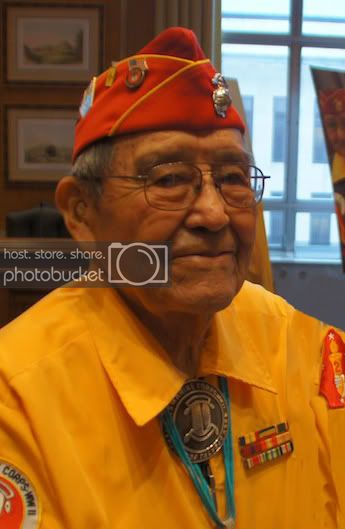
“Code Talker” Frank Chee Willeto (Navajo) died on Saturday, June 23. Willeto enlisted in the U.S. Marines 6th Division in 1944 at the age of 17. Willeto served in the Pacific Theatre in Saipan and Okinawa during World War II. He was one of a few selected to serve on a secret mission that used a code developed by speakers of Navajo and military cryptographers to transmit radio communications to Allied forces. A code within a code. For example, the term for “platoon” was has-clish-nih, the Navajo word for “mud,” where platoons spent much of their time. The undecipherable Navajo code frustrated Japanese linguists who never cracked it. The Code Talkers are credited with saving thousands of lives during the war. They were always guarded by one or two other Marines so they would not be mistaken for a Japanese soldier. The Code Talkers are given considerable credit for the victory over Japan on Iwo Jima. Their mission remained a military secret and they returned home as silent heroes. Even though their story was finally told when the mission was declassified in 1968, Congressional Gold Medals were not awarded until 2001, 60 years after the war began.
-navajo
• Supreme Court: Tribes Owed Millions in Reimbursements: In a major 5-4 ruling in Salazar v. Ramah Navajo Chapter that saw an unusual mix of justices on each side, the Supreme Court has decided the government must reimburse American Indian tribes for millions of dollars they spent on federal programs. Although $1.6 billion was appropriated to the Bureau of Indian Affairs for “the operations of Indian programs” in 2000, only $120.2 million was paid out. The justices ruled that the government “was obligated to pay the tribes’ contract support costs in full.” Roger Martinez, president of the Ramah Navajo Chapter in New Mexico was a plaintiff in the case. He told journalists that the band was sad the case had had to go to the Supreme Court, but “happy that they sided with us.”
-Meteor Blades
• Tribes Start to Receive $1 Billion in Settlement Money:
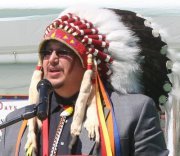
As we reported in April, the federal government has come to agreement with 41 tribes over mismanagement by the Bureau of Indian Affairs of concessions on Indian trust land. The payout? $1 billion. Some tribes are now receiving their share of that money. Among them:
– Minnesota: Leech Lake, $3 million; the Minnesota Chippewa, $1.99 million; the Bois Forte, $1 million
– Wisconsin: Lac Courte Oreilles, $8 million; Lac du Flambeau, $5 million; Bad River, $3 million.
– North Dakota: Spirit Lake, $6 million; Standing Rock Sioux, $48.9 million
Blackfeet Nation Chairman T.J. Show said that half of his tribe’s $19 million will go for investment projects on its Montana reservation, including a 90-room hotel. The rest of the money will be distributed evenly to each of the tribe’s approximately 17,000 members-$550 per person. Said Show:
We received an avalanche of responses with many, many great ideas. Some said it all should go to our youth, others said it should all go to per caps, some wanted debt paid down, others wanted to better fund programs and projects. After giving much consideration to all these great ideas and requests, we decided the fair and responsible thing to do was spend half on per caps and then stretch the other half as far as we can. […]
I believe it will be an economic benefit to the tribal members to use as they see fit, whether it be for college kids going to school or parents just needing to feed their child.
-Meteor Blades
• Indians Worry About Bill Relaxing Eco-Rules at Border: The U.S. House of Representatives has passed a bill that eases environmental regulations along the Canadian and Mexican borders. The bill is meant to keep out drug smugglers. But the Department of Homeland Security has said it is unnecessary. It would allow the Border Patrol to have full access access to public and tribal lands within 100 miles of the borders. It would also waive dozens of protective laws, including the National Environmental Policy Act, Clean Water Act and others. The National Congress of American Indians, the nation’s largest representative body of Indians, sent a letter to the Senate in opposition to the bill.
The House measure exempted tribes, but Kesner Flores [Wintun/Paute-Cortina Rancheria], interim director of the National Tribal Environmental Council, is concerned that the Senate version of the bill contains no such exemption. The House version affects swaths of land along both the northern and southern U.S. borders, which he says are home to numerous tribes.
“That actually are homelands to a lot of native nations, who have their sovereignty issues and the nations; endangered species, and habitat and other things that are there that might be impacted, or could be impacted and probably will be impacted by this bill.”
Flores says the Obama administration and federal public lands rules require that tribes be consulted before making these types of major changes.
-Meteor Blades
• The 20th Annual Lakota War Pony Races Will Be Held June 25:
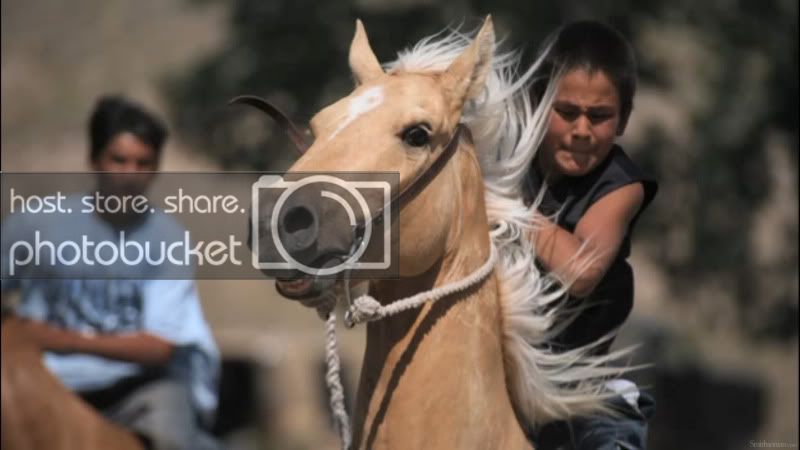
Each year, the Lakota on the Pine Ridge reservation in South Dakota commemorate their victory over the U.S. Army at the Battle of the Greasy Grass, better known in American history as the Battle of Little Bighorn. Several horse races are held during the day, including one where the riders chase a volunteer dressed as George Armstrong Custer. I wrote about this event in 2010 with photos and a video.
-navajo
• 100 Trail of Tears Route Markers Dedicated:
Among the people of the “Five Civilized Tribes,” most particularly the Cherokee, the Trail of Tears is not forgotten. But most Americans have only the vaguest notion of the atrocity bearing that name. It was the relocation-at-gunpoint of tens of thousands of Indians, mostly from Southern states, to Indian Territory, present-day Oklahoma. Along the trail, nearly a quarter of the Cherokee Nation died from exposure and inadequate food. This past week, some 100 Trail of Tear route markers were dedicated in Alabama, just as they have been in other states, including Missouri in April.
Patsy Edgar (Cherokee) said that remembering the past is not done only to show the past but also “[t]o point out to people that we are still here as a nation, and we still actually, we thrive, so it’s not all about the negative, it’s also very much about the positive.”
In a short speech, Aaron Mahr, the superintendent of the Trail of Tears National Historic Trail, said at the dedication ceremony:
“It’s a tragic story from our past that reveals some of the darker forces,” Mahr said.
“It speaks to the issue of racism, it speaks to the issue of forced relocation, removal, concentration camps on American soil.
“The dangers of extremism, issues that are part of our past.”
-Meteor Blades

Indians have often been referred to as the “Vanishing Americans.” But we are still here, entangled each in his or her unique way with modern America, blended into the dominant culture or not, full-blood or not, on the reservation or not, and living lives much like the lives of other Americans, but with differences related to our history on this continent, our diverse cultures and religions, and our special legal status. To most other Americans, we are invisible, or only perceived in the most stereotyped fashion.First Nations News & Views is designed to provide a window into our world, each Sunday reporting on a small number of stories, both the good and the not-so-good, and providing a reminder of where we came from, what we are doing now and what matters to us. We wish to make it clear that neither navajo nor I make any claim whatsoever to speak for anyone other than ourselves, as individuals, not for the Navajo people or the Seminole people, the tribes in which we are enrolled as members, nor, of course, the people of any other tribes.
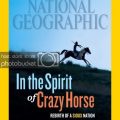
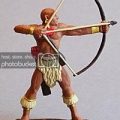
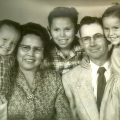

Leave a Reply